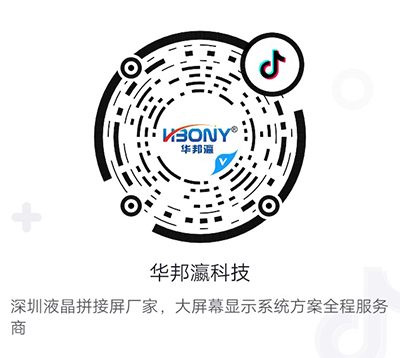At present, the market prospect of the LED display industry has reached an unprecedented development height, and the price has stabilized, and it has also been greatly favored by the market. I believe that in the future there will be more places to use LED displays, including home! Many customers don’t have professional knowledge about LED displays and only look at the price. They don’t know how to distinguish between gold wire and alloy wire for LED displays. In fact, there are several kinds of materials for LED lamp beads, including copper bracket gold wire package and copper bracket. Alloy wire encapsulation, copper stent copper wire encapsulation, and iron stent encapsulation of the product a few years ago. At present, iron stents have been eliminated and only a few will use them! The different packaging materials also determine the service life, color, brightness, and actual display effect of the LED display beads, so it is very necessary to understand the identification method of the LED display gold wire package before choosing the LED display. .

The identification method of LED display gold wire package is as follows
Method 1: Chemical composition inspection
1. EDS composition detection: identification of incoming materials: gold wire, silver wire, gold-clad silver alloy wire, copper wire, aluminum wire.
Gold wire has the advantages of high electrical conductivity, good thermal conductivity, corrosion resistance, good toughness, and excellent chemical stability. However, the price of gold wire is expensive, which leads to high packaging costs. In the periodic table of elements, the four metal elements of gold, silver, copper and aluminum in the transition group have high electrical conductivity. Many LED manufacturers try to develop materials such as copper alloy, gold-coated silver alloy wire, and silver alloy wire to replace expensive gold wires. Although these alternatives are superior to gold wires in some properties, they are much worse in terms of chemical stability. For example, silver wires and gold-coated silver alloy wires are susceptible to sulfur/chlorine/bromination corrosion, and copper wires are prone to oxidation. In the case of encapsulated silica gel similar to water-absorbent and breathable sponge, these alternatives make the bonding wire vulnerable to chemical corrosion, reduce the reliability of the light source, and use it for a long time, and the LED lamp beads are easy to break and die.
2. ICP purity test: identify the purity level of the gold wire and determine the added alloy elements.LED bond alloy wire is made of wire drawing with gold purity of 99.99% or more, which contains trace elements such as Ag/Cu/Si/Ca/Mg. By designing a reasonable alloy composition, the gold wire has the advantages of sufficiently high tensile and bonding strength, good ball formation, and low vibration fracture rate. Most of the bond alloy wires should be high-purity alloy wires with a purity of 99.99% or more, and the total amount of trace elements should be kept below 0.01% to maintain the characteristics of gold.
Method 2: Diameter deviationOne gram of gold can draw a gold wire with a length of 26.37m and a diameter of 50μm (2 mil), or a gold wire with a length of 105.49m and a diameter of 25μm (1 mil). If the length of the gold wire is fixed, and if the diameter of the incoming gold wire is half of the original diameter, the measured resistance of the gold wire is one-fourth of the normal. For suppliers, the smaller the diameter of the gold wire, the lower the cost, and the higher the profit when the price remains unchanged. For LED customers who use gold wires, purchasing gold wires that cut corners in diameter will have the risk of increased gold wire resistance and lower fusing current, which will greatly reduce the life of the LED light source. The life of 1.0 mil gold wire must be shorter than 1.2 mil gold wire.

Method 3: Surface quality inspection
(1) The surface of the wire should be free of nicks, pits, scratches, cracks, bumps, discounts and other defects that reduce the service life of the device that exceed 5% of the wire diameter. During the drawing process of the gold wire, the surface defects on the wire surface will increase the current density and make the damaged part easily burned. At the same time, the resistance to mechanical stress is reduced, causing the damage of the inner lead to break.
(2) The surface of the gold wire should be free of oil, rust, dust, and other adherents, which will reduce the bonding strength between the gold wire and the LED chip, and between the gold wire and the bracket.
Method 4: Testing of mechanical properties
(Break load and elongation A good gold wire that can withstand the impact generated by resin packaging must have a specified breaking load and elongation. At the same time, the breaking force and elongation of the gold wire play a key role in the quality of wire bonding , Bonding wire with high breaking rate and elongation is more conducive to bonding. Too soft gold wire will cause the following disadvantages: (1) Arch wire sagging; (2) Spherical instability; (3) Ball neck is easy to shrink (4) Gold wire is easy to break. Too hard gold wire will cause the following defects: (1) Holes are punched out of chip electrodes or epitaxy; (2) Gold ball neck is broken; (3) It is difficult to form alloy; (4) Difficult to control arch wire arc。
I believe that with the above knowledge, everyone can identify the authenticity of the LED display gold wire package. It is worth noting that although the gold wire, alloy wire, and copper wire are only a word difference, the cost and use effect There is indeed a big difference. Don't ignore the important points because you are greedy for cheap products when choosing products! Put a gold wire and a copper wire to compare the display effect, there is a big difference in the display effect
 Solution
Solution News
News Service
Service.jpg) Video
Video



.jpg)





